Reviews
Steve Miner
USA, 1998
Credits
Review by Victoria Large
Posted on 17 October 2010
Source Miramax DVD
Related articles
The 90s Slasher Revival
Scream
I Know What You Did Last Summer
I Still Know What You Did Last Summer
Categories 31 Days of Horror VII
For much of the nineties, the horror genre felt exhausted. Save for the occasional glimmer of hope (such as Wes Craven’s New Nightmare in 1994) the slasher boom of the eighties had largely sputtered into cultural irrelevance, dwindling profits, and some really terrible movies. But then came 1996’s Scream, a sleeper hit that saw screenwriter Kevin Williamson testing out a new strategy: creating a teen slasher movie about the teens who grew up with slasher movies in their VCRs. The film’s success spurred studios to start churning out more youth-skewing flicks in general, and more youth-skewering horror flicks in particular, many of them aping Scream’s metamovie bent, and a number of them flowing from Williamson’s own pen. Now, with nearly fifteen years separating us from Scream (and with the belated Scream 4 scheduled to open next year), it’s worth looking back at what nineties slasher movies said about us then, and what they have to say to us now. Every Sunday for the next four weeks, look for a new review of a film from the fleeting, achingly self-aware days of the nineties slasher revival.
For years, I actually thought that Scream screenwriter Kevin Williamson also wrote Halloween H20: Twenty Years Later, the oddly titled 1998 sequel to John Carpenter’s Halloween. I was wrong. Though the press at the time made much of Williamson’s reported involvement in some of the early treatments for H20, the screenplay is actually the work of lesser-known scribes Robert Zappia and Matt Greenberg. But no matter: H20 is so thoroughly possessed of Scream’s smart spirit that it stands as one of the latter film’s most obvious progeny. It’s also easily one of the hallmarks in the late-nineties horror wave.
In 1995, the Halloween franchise flamed out with the sixth installment in the series, Halloween: The Curse of Michael Myers. A run-of-the-mill slasher made hoarier and less comprehensible by some ill-conceived supernatural trappings, The Curse of Michael Myers says as much about the moribund state of its subgenre in 1995 as H20 says about the slasher’s brief reinvigoration at the end of the decade. And while The Curse of Michael Myers is a completists-only affair, a curiosity for horror diehards at best, H20 actually stands pretty well on its own. (Of course budding slasher scholars should start with Carpenter’s original, but they could certainly do worse than what’s on offer here.)
Ignoring pretty much every Halloween sequel besides the second installment (a hospital-set bloodbath released in 1981), H20 shrugs off the supposed death of Jamie Lee Curtis’ character Laurie Strode by explaining that she’s been in hiding for twenty years, living under the assumed name Keri Tate. Laurie Strode is, of course, a prototypical Final Girl, the virginal babysitter who cowered in a closet while Michael Myers’ knife-wielding arm crashed heavily through the door in Halloween. What’s more, Curtis herself is the most celebrated scream queen of the first wave of slasher movies: in addition to Halloween and Halloween II, she starred in the 1980 genre entries Prom Night and Terror Train, plus John Carpenter’s supernatural thriller The Fog. Keeping all of this in mind, it’s easy to see how deliciously fitting it is that Curtis is on hand for H20. Scream may have let a Final Girl revise the typical slasher script when Neve Campbell’s Sidney took charge at the end of the film, but H20 gives the Final Girl a belated shot at redemption.
Zappia and Greenberg throw in a bit of high-brow metacommentary on the subject of redemption when Strode, now a headmistress and literature instructor at a posh California private school, gabs with her class about Mary Shelley’s Frankenstein and the necessity of confronting one’s monsters, but this is only a brushstroke. With Scream having deconstructed the slasher so mercilessly just two years before, the sight of a grown up Laurie Strode clutching an axe and growling, “C’mon. Get up,” to a temporarily felled Myers speaks pretty effectively for itself.
Indeed, H20’s brisk self-assurance is part of its appeal: in 1998, purveyors of slasher movies could safely assume that the majority of their audience, from cranky film critics to wide-eyed teenage fans, would step into a theater thinking, “I know how these movies work.” So H20 doesn’t need to explain itself, and when it does wink at the audience, it generally does so teasingly: Scream 2 plays on a television, creating some weird paradox wherein Halloween is fictional in the Scream universe and Scream is fictional in the Halloween universe; and Psycho star (and mother of Jamie Lee Curtis) Janet Leigh turns up as Laurie Strode’s concerned secretary. (The latter gag gives rise to one of my very favorite moments in horror. Standing in front of a car that looks just like the one she drove in Psycho, Leigh wishes Curtis a “Happy Halloween” while Bernard Herrmann echoes on the soundtrack.)
Cheeky but unencumbered, H20 makes for an evening of no-nonsense horror at a very snappy pace (the running time is a lean eighty-six minutes). Director Steve Miner - the man behind the first two Friday the 13th sequels, and thus arguably the man to be blamed or lauded for the durability of the hockey-masked killer Jason Voorhees - keeps the proceedings taut and genuinely frightening here. Even a poor Halloween sequel usually has its moments, owing to the uniquely invasive nature of its stark villain. Freddy Krueger is confined to the world of dreams, and Jason spends the bulk of his time at some run-down summer camp, but as H20’s grim pre-credits sequence reminds us, there’s nothing keeping Michael Myers from turning up on the lawn in some otherwise ordinary suburb clutching a butcher knife. Miner makes the most of his blank slate of a serial killer throughout, particularly during the terrific sequence where Laurie hides under a table—and Myers appears standing on top of it.
But H20 follows Scream’s lead in elevating its characters beyond the realm of cannon fodder, and this is more Laurie’s film than Michael Myers’. Returning to the series that made her name, Curtis is excellent—she conveys how severely damaged Laurie is, gulping down an extra glass of wine during lunch while her boyfriend is in the bathroom and getting panicky over the prospect of her teenage son leaving town for the weekend, but she also makes for a truly kickass action hero here. (And how often do women over thirty-five get to play kickass action heroes or flawed, interesting characters in Hollywood?) H20 is feminist in an incidental kind of way that’s hard not to love: when Laurie decides to confront her monster, she does so with such determination it’s unlikely to inspire any skepticism—only grateful shouts of, “Finally!”
The other characters are likable enough, with Josh Hartnett making his debut as Laurie’s seventeen-year-old son (whose accusation that his mother’s anxieties are “inhibiting” his “growth process” is straight out of Kevin Williamson’s mouthy-teen-with-a-strong-vocabulary playbook). Michelle Williams plays Hartnett’s refreshingly non-clingy, non-annoying, non-helpless girlfriend. Jodi Lynn O’Keefe and Adam Hann-Byrd, the film’s obligatory “B” couple, are actually quite charming, and we even get a quick appearance from Joseph Gordon-Levitt, somewhere between child stardom and his current status as one of the better actors of his generation. It’s a shame that Donald Pleasance, the veteran actor who appeared in Halloween 1, 2, 4, 5, and 6, passed away in 1995, missing out on the vindicating H20, but the film is dedicated to his memory.
Twelve years since its release, Halloween H20 stands as a would-be great finale for the series that John Carpenter inadvertently started in 1978. (The series would return with the creaky Halloween: Resurrection in 2002.) It also feels like a valedictory moment for the nineties slasher revival itself. H20 fuses the legacies of Halloween and Scream and does both proud. I will never forget seeing the film’s ending for the first time in a packed suburban movie theater in 1998. The conclusion elicited a collective yelp of surprise, relief, and amusement from the audience; I want to say that it was cathartic, it actually bordered on being exorcistic. If Scream was all about how well we understood slasher films - how we’ve shaped them and how they’ve shaped us - H20 celebrated the liberation that came with that understanding. After all, if Laurie Strode could finally face down her boogeyman, maybe our own collective unconscious had undergone a shift too, one where the babysitter didn’t also have to be the victim.
More 31 Days of Horror VII
-

The Thin Blue Line
1988 -

The Ninth Configuration
1980 -

Scream
1996 -
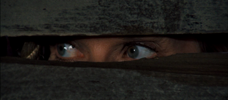
Dying Room Only
1973 -

Brain Dead
1990 -

Zombi 2
1979 -
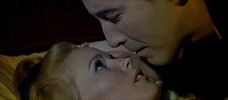
Dracula Has Risen from the Grave
1968 -

The Storyteller
1988-1989 -
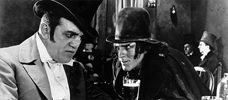
Dr. Jekyll and Mr. Hyde
1920 -
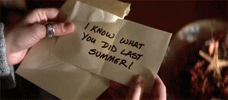
I Know What You Did Last Summer
1997 -
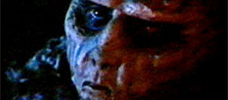
Don’t Be Afraid of the Dark
1973 -

Dark Age
1987 -

Inferno
1980 -
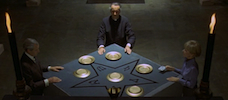
To the Devil a Daughter
UK / West Germany -

Trapped
1973 -
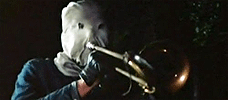
The Town that Dreaded Sundown
1976 -

Halloween H20: Twenty Years Later
1998 -

Killdozer
1973 -
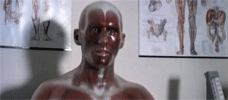
Pin
1989 -

Frankenstein Created Woman
1967 -

Reptilicus
1961 -
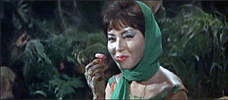
Matango
1963 -

I Still Know What You Did Last Summer
1998 -

Night Terror
1977 -
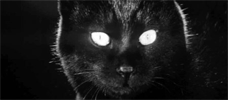
Kuroneko
1968 -

Demons
1985 -
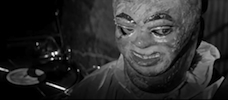
Paranoiac
1963 -

Let Me In
2010 -

The Phantom of the Opera
1925
We don’t do comments anymore, but you may contact us here or find us on Twitter or Facebook.



